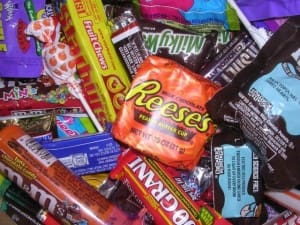A report on Cdecisions.com shows that candy products have enjoyed consistent growth in all retail markets, despite the poor economy, and convenience stores are enjoying stronger sales in this category than the retail market overall.
This isn’t surprising. Brands such as Mars, Hershey and Nestle offer sweet treats that are relatively easy on the wallet and easy to buy, particularly when the candies are strategically shelved in a busy convenience store.
Sales in dollars for chocolate in U.S. convenience stores rose 9.2% for the year ending Dec. 25, 2011, according to market research firm SymphonyIRI Group. Unit sales were up 1.5% in that same period, the firm reports. The average unit price rose by nine cents.
 At the top of the heap are Mars and Hershey, whose products accounted for 19 of the top 20 sellers in single-unit packages smaller than 3.5 ounces.
At the top of the heap are Mars and Hershey, whose products accounted for 19 of the top 20 sellers in single-unit packages smaller than 3.5 ounces.
The Cdecisions.com report points out that while chocolate candy sales are up, many retailers are concerned that the price is also rising. Not all retailers have chosen to raise their shelf prices, however.
A buyer and category manager for 33 convenience stores in New York was quoted as saying, “It becomes hard to offer a value with the price up so much. There was a point in time where you’d be able to buy a king-sized candy bar for 99 cents, now that’s regular size. People are still looking for that lower price.”
There’s no clear way around having to raise the retail price of any product, when it becomes necessary. But there is a way to avoid seeing a significant drop in sales. In the chocolate market, although the buyer above believes that people are still “looking for that lower price,” statistics show that, either way, people still are buying more and more chocolate. So what happens with chocolate – or any convenience store item – if the wholesale price jumps too high?

The convenience store owner knows that many of his products are “impulse buys.” To keep customers in an “impulse mood,” the store needs to make customers happy. The way to do that is provide a clean store that’s well-laid-out and, as the name implies, convenient. And service must always be at the top of the objectives list.
When consumers have good experiences in a store, they’re more likely to overlook a rise in price of a particular item. We’ve all heard the bad-service horror stories that float around, and that’s where each of us can gain an advantage, regardless of the type of business we’re in.
For convenience store owners, it’s even more imperative to follow through on excellent service practices with their entire staff: competitors are everywhere, and consumers in their local area have plenty of choice on where to buy that Milky Way or get that cup of cappuccino.
Fortunately, at least where chocolate candy is concerned, owners can keep breathing fairly easy.
The Glidewell Team
